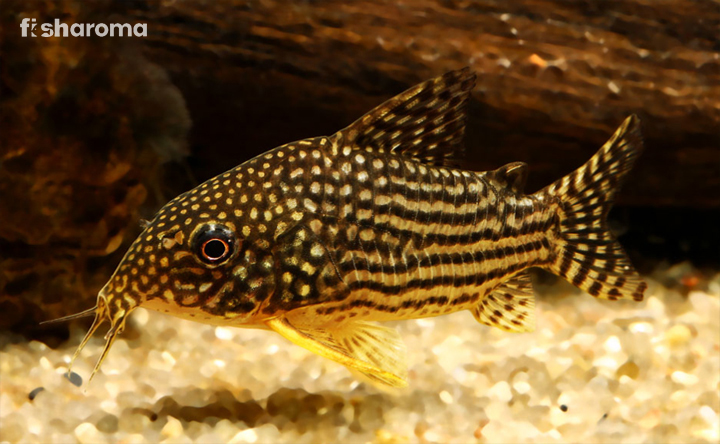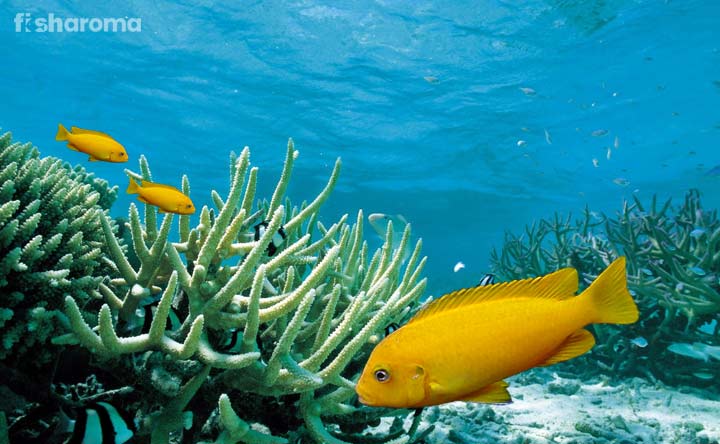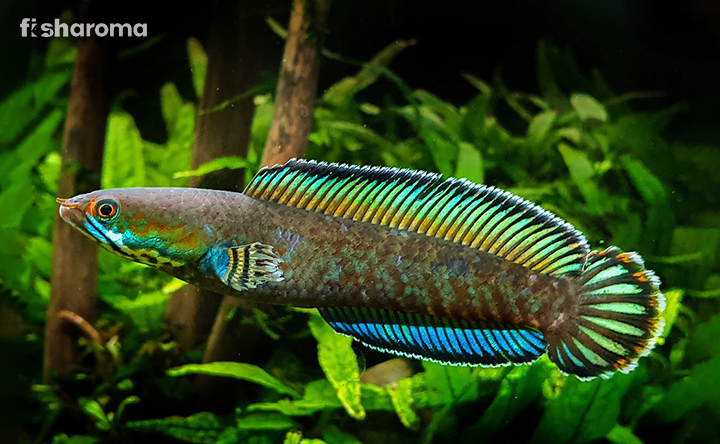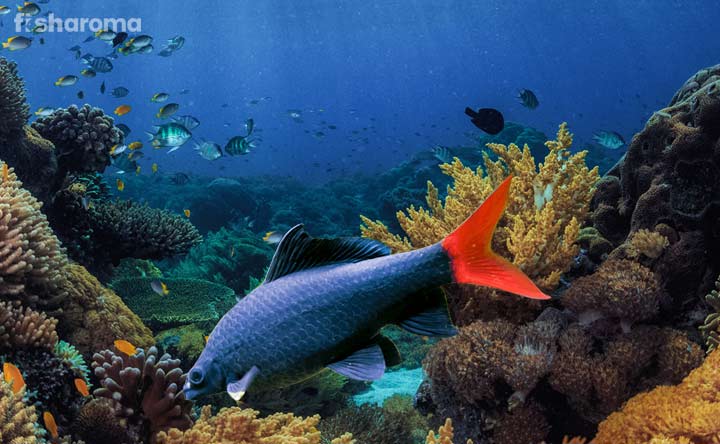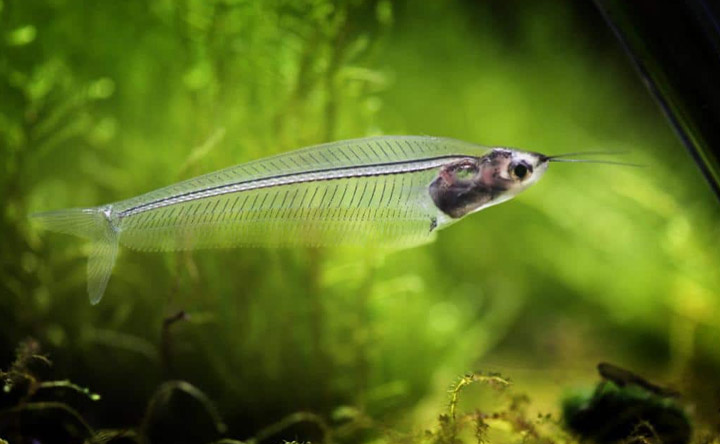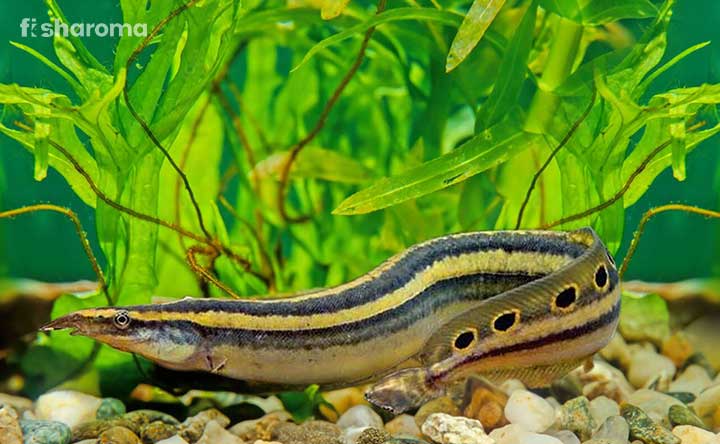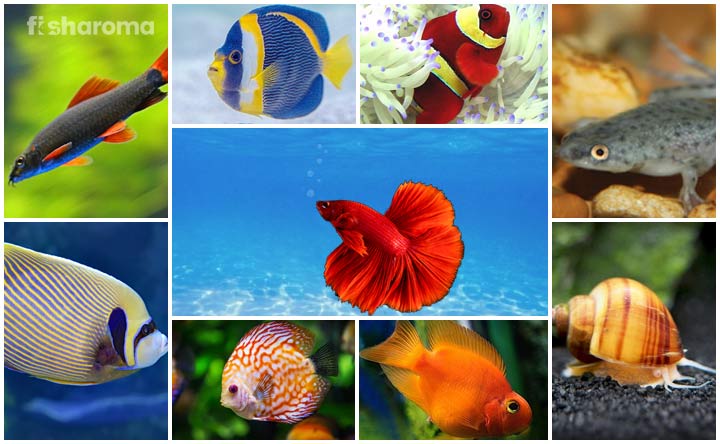Black Ruby Barb And Some Important Notes On Its Care Guide
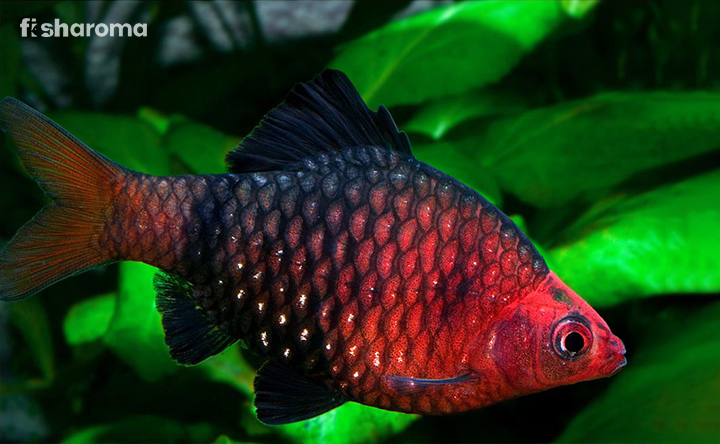
- Origin and Habitat of Black Ruby Barb
- Appearance of Black Ruby Barb
- Behaviour of Black Ruby Barb
- Lifespan of Black Ruby Barb
- Diet of Black Ruby Barb
- Tank Requirements for Black Ruby Barb
- Water Type for Black Ruby Barb
- Compatibility of Black Ruby Barb
- Breeding of Black Ruby Barb
- Diseases and Treatments of Black Ruby Barb
- Summary
Black Ruby Barbs are small freshwater fishes, mostly famous for their docile deportment and spectacular appearance. The gentle fishes are facing an existential crisis in the wild due to extensive deforestation and therefore, it is the captive-bred species that are usually available for aquarists. This species is easy to care for and it doesn’t need much more than basic dietary needs and water parameters.
Now, we are about to elaborately talk through, regarding the species type and what it requires to live gracefully. Remember, apart from their physical thriving condition, you need to provide sufficient mental stimulating ingredients so that they can show off their full spirit, and serve the purpose of your aquarium.
Key Specifications of Black Ruby Barb
The following chart provides a quick yet informative summary of the species. Here, we go without further ado!
| Also Known As | Purplehead Barb, Purple-headed Barb, Black Barb, and Ruby Barb |
| Origin | Sri Lanka |
| Lifespan | Around 5 Years |
| Colours | Reddish black |
| Temperament | Peaceful |
| Size | 1-2 inches |
| Diet | Omnivorous |
| Reproduction | Egg-laying |
| Maintenance Requirements | Beginner-friendly |
| Tank Size | 20-30 gallons |
| IUCN Status | Vulnerable |
Overview
The Black Ruby Barb, scientifically known as Pethia nigrofasciata, belongs to the family of Cyprinidae. However, regarding its binomial name and its classification, there was a bit of confusion earlier and it was named Barbus nigrofasciatus.
With its tiny size and peaceful temperament, the fish has become an ideal tank option for people who have just started to own fishes. The captive breeding of this species is increasing at an exponential rate, because they are such fuss-free darling fish that will never give you any problems. The striking colouration is a soothing relief for the sore eyes, more so, because they swim in tranquil motion.
Their life expectancy is pretty good too, in comparison to other small fishes of the same group. Just their wild status is quite disheartening, other than that, we are pretty sure the species will bounce back on its fins pretty soon in nature.
Origin and Habitat of Black Ruby Barb
The Black Ruby Barb is a native species of the South Asian Country of Sri Lanka. The fishes are found mostly in the range of Nilwala River and Kelani River basins. The fish was also introduced to the longest river in the country, (Sri Lanka), Mahaweli, but sadly, they don’t exist there anymore.
As far as the habitat is considered, their distribution is mostly in the slow-moving water bodies with thick plantations all around, and it has an elevation of around 1000 ft. The water is on the verge of being acidic and shaded by the vegetation. The waters are mainly from the hilly streams, so they are moderately cool. In their natural setting, the surface of the waters is filled with a kind of organic detritus, known as mulm.
Appearance of Black Ruby Barb
With a typical Barb-like shape, the Black Ruby Barb has a high back and a characteristically pointed head. The small fishes change their colouration during their growth towards adulthood. Sexual dimorphism is observed in terms of both shape and colour.
Size
The small fishes are mostly around 2 inches, but there are species as small as 1 inch and as big as 3 inches. Male fishes are mostly taller and thinner than female fishes. While on the other hand, females have a well-rounded belly.
Colour
The most amusing thing about a Black Ruby Barb is its colouration, without a doubt.
The young or juvenile fishes have light or rather pale yellow hues all over their body. It might seem to appear greyish-yellow sometimes. Juvenile fishes of both genders will have some bands or stripes on the body.
Adult fishes have a purplish-red head, while the male has a bright dark blue and silver combination. Females are slightly paler as far as the shade is concerned, with dark stripes or bars, placed vertically on their body. The dorsal fins in the males are entirely black, but in females only the base of the fin is black and nothing more. The anal and pelvic fins in male Black Ruby Barbs are either reddish black or just black. Male fishes become intensely red around their breeding time.
They become pale when they are either threatened or stressed for any reason.
Behaviour of Black Ruby Barb
What more can we say about the darling Black Ruby Barb since we have mentioned that they are gentle? They are peace-loving, not at all a fussy-eater, and welcome other similar fishes inside the tank without a problem. They love to swim with their group, and it is the number of their own kind that gives them confidence.
Their frequent swimming areas are either the middle or the top part of the water inside the tank. They can rarely come close to the lower surface of the tank, but that doesn’t mean they are bottom dwellers.
Lifespan of Black Ruby Barb
A Black Ruby Barb can have a life expectancy of a maximum of 5 years. Many fishes die around 3 years of age as well. But, taking proper care will ensure a healthy lifespan without a doubt.
Diet of Black Ruby Barb
Black Ruby Barb’s diet majorly consists of detritus or algae in the wild. So, you can provide that in the tank as well, with some healthy incorporation of frozen meaty and flake foods. Choose the commercially available fish foods, powered with high vegetable content. They can’t thrive only on a protein-enriched diet, rather they need vegetable nutrients.
Their regular vegetable-based diet should include the following to ensure the vitamin intake
- Shelled peas
- Zucchini
- Spinach (Blanched)
- Lettuce (Blanched)
The following food ideas are best to be given once or twice every week, as a treat.
- Daphnia
- Brine Shrimp
- Bloodworm
- Brownworm
- Sludgeworm
- Mosquito Larvae
While giving the worms, make sure they are well chopped into little pieces. Too much worm feeding can result in bloating, so give them as per the instruction.
Tank Requirements of Black Ruby Barb
Setting up the tank for any fish is the most crucial thing as you need your fish to be at its most comfortable self. Coming to the Black Ruby Barb, if these fishes get suitable tanks, that will be shown from their content behaviour. Or else, they will become shy and hesitate to do even the commonest of their traits.
As mentioned, the community fish loves swimming with a group and that is what they are most comfortable at. So, you should remember that you are not buying a single fish, nor can you arrange a nano bowl or a tiny tank for a solo fish.
Tank Size
The ideal tank size for at least 4-6 Black Ruby Barbs is 30 gallons, but a larger tank is highly recommended. Only go for 20 gallons when you have some spacing problem in your apartment. Keep in mind, that is the minimum size, don’t go for less than the size or else there is no point in keeping a school of Black Ruby Barb.
Tank Lid
Always make sure that the tank has a proper detachable lid. This is because the lid prevents any unwanted objects from falling into the tank water and subsequently compromising the water quality or harming the fish in any way.
Some fishes from the Barb family have the tendency to jump out of the tank, but not necessarily your Black Ruby Barb will do that. Still, the lid is always a better option to prevent such accidental things.
Substrate
Arrange for some gravel-based or sand-like surface for the tank, because that is what the fishes are accustomed to having in their natural setting. Some small yet fine rocks can also be placed at the bottom of the tank. The substrate should be dark in colour because that is what they get in the wild, and also their vibrant hues will look good in contrast to the substrate.
Filter
It is of utmost importance to maintain the cleanliness of the water. For that purpose, install an Air-Powered Sponge Filter for the tank.
Ornaments
The best thing about the Black Ruby Barb is you can decorate their tank as much as you can. Just don’t make the tank cramped, otherwise, there is no restriction regarding the ornamentation. You must provide some bogwoods or driftwoods, hiding caves or similar structures inside the tank. Note that these hideouts are important for the fishes, as they might need to use some private moments hiding from others.
Lighting
Dim lights are preferable for these Barbs as in the wild they don’t get strong sunlight because of the densely forested surrounding.
Presence of Flora
Freshwater aquatic plants are mandatory for a Barb-specific tank because, on one hand, the plants will give shelter to the fishes, and on the other, plants will shade the lights and make them even more subdued. That is actually a total ideal setting for the Black Ruby Barb. Floating plants, be it artificial or real ones, can be included inside the tank.
Cleaning Method
The tank should be clean all the time, and there shouldn’t be any compromise that you can afford to do. The health of any domestic fish depends a lot on the cleanliness of the tank and its other paraphernalia.
Always make sure that you are keeping the glass clean, both from the internal and external sides. Decorative stuff like artificial plants, or even driftwoods should be thoroughly cleaned.
If you spot any food residue or anything of that sort, things that can pollute the water and affect the health of the fishes, you should immediately remove them from the tank. If the plants are growing extensively and creating genuine space problems for the fishes, then you need to trim them down periodically.
While the above-mentioned points are subjective, the timing or the gap between two cleaning days can differ from person to person. Despite having a filter, you should never skip the cleaning procedure.
Water Type of Black Ruby Barb
In the wild territory, the Black Ruby Barb resides in acidic waters which are cold and soft in nature. So, while replicating the exact type of environment inside the tank, you need to create certain parameters related to this. The fishes can’t tolerate sudden changes in the water condition.
Temperature
The ideal range for the Barbs starts from 20 Degrees Celsius and can go up to 26 Degrees Celsius. Though according to many breeders these fishes stay really well when the lowest temperature is 22 Degrees Celsius.
pH Level
The pH level of the water is 6.0-6.5.
Hardness
The general hardness of the water level should be within 5-12 dGH.
Replacement Procedure of Water
Changing the water of the tank is an integral part of the cleaning process. As mentioned, these fishes can experience shock if they go through extensive water changes at a time. So, it is wise to follow the partial water changing process each time. It could be 20-25% of the entire water amount of the tank that you can change every two weeks. If you can do that every week then around 10% water change is fine.
The water change should be done using a water changer that you commonly find in the market.
Compatibility of Black Ruby Barb
Black Ruby Barbs can stay with similar schooling fishes who don’t disturb each other. Temperament wise, these Barbs stay completely unbothered by other fishes’ presence. So, you have many options to choose the ideal tankmates for these sweethearts from. We are segregating the following two sections in terms of who you should place your Black Ruby Barbs with and whom should you strictly avoid.
Suitable Tank Mates
Ideally, Black Ruby Barbs are the most comfortable with their own kinds of fishes, meaning, fellow Ruby Barbs. We suggest that you keep at least 8 of them together, and if that is not possible then 6 will do. There are other groups of fishes like Catfishes, Gouramis, other Barbs, Tetras, Danios and some livebearer fishes.
Unsuitable Tank Mates
Aggressive and territorial fishes are not compatible with Black Ruby Barbs as the latter will be intimidated.
Breeding of Black Ruby Barb
Black Ruby Barbs are not difficult to breed at all, rather they steadily breed. Especially, when all the conditions like sufficient live food, water temperatures at 25-27 Degrees Celsius, availability of a spawning rope, persist. You can set up a separate breeding tank as a basic step. As far as feeding is considered, the effectiveness of the live food is undeniable, but in absence of that, you can provide Brine Shrimps and Bloodworms in frozen form. Some plants like Java Moss and other similar plants can be kept inside the tank as they are conducive to building a breeding atmosphere.
The spawning phase is highly encouraged with a sufficient amount of sunlight, illuminating the tank and the male starts courting the female fishes with its open and extended fins. It (the male fish) starts to swim around its counterpart and woo the latter. Once the spawning starts, it is an elaborative affair that can last for a couple of hours. The female scatters around 100 eggs afterwards.
The immediate steps should include taking the parents away from the eggs and covering the eggs from the sunlight. This is because these fishes can consume their eggs or hatchlings. The eggs are also super sensitive when it comes to exposure to the Sun. They are also susceptible to some fungal infections that you can prevent or cure with methylene blue dye.
While the eggs are hatched within a day, the young fishes or the “Fry” takes one more day to start swimming properly. They will eat off the egg yolks initially then you can feed infusoria, or any market-ready Fry food to them in the meanwhile.
Diseases and Treatments of Black Ruby Barb
These fishes are mostly healthy and ailment is just an anomaly for them. Mostly such things are triggered by poor water quality and lack of food. Parasitic and bacterial infections can trouble them too, but that can be easily prevented if you keep on checking the standard parameters. Despite your hard efforts, if there is anything troubling your pet fish and you can’t figure out the reason, you must consult a professional veterinarian on an immediate basis.
Summary
Black Ruby Barbs are bred for their immense beauty. You don’t have to do something out of your way to keep them. The small fishes, wonderfully cohabiting with other groups of fishes look thoroughly spectacular. There is no hassle involved in their feeding and breeding. Although they are egg-laying, when it comes to sharing the tank with other mates, they can stay with livebearer fishes as well. So, their power to coexist is something pretty good and to vouch for.
Other Similar Care Guides
Here are some of the following caring guides to other Barb Species
- Rosy Barb – The freshwater species belongs to the Cyprinidae family. It is a small species, and like many other Barbs, this shows beautiful colours throughout their bodies.
- Cherry Barb – This Barb loves to stay amidst a well-planted tank. This species is mostly found in Sri Lanka.
- Tiger Barb – With an iconic “banded” or “striped” body, the Tiger Barb stays true to its name as far as the appearance is concerned. Its social nature allows it to stay with other Barb fishes.

